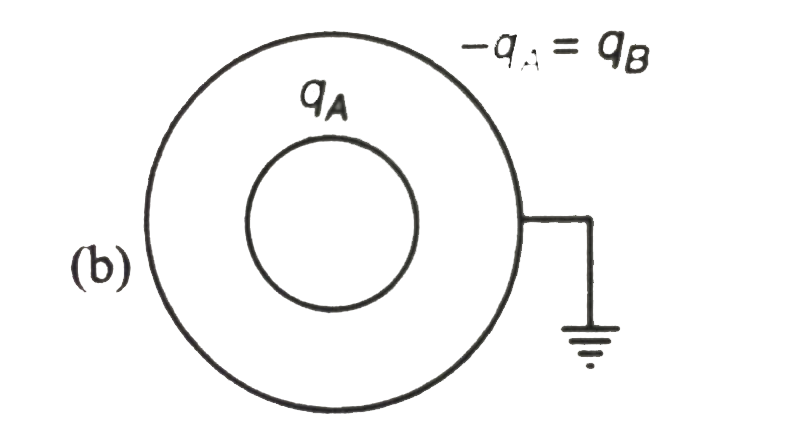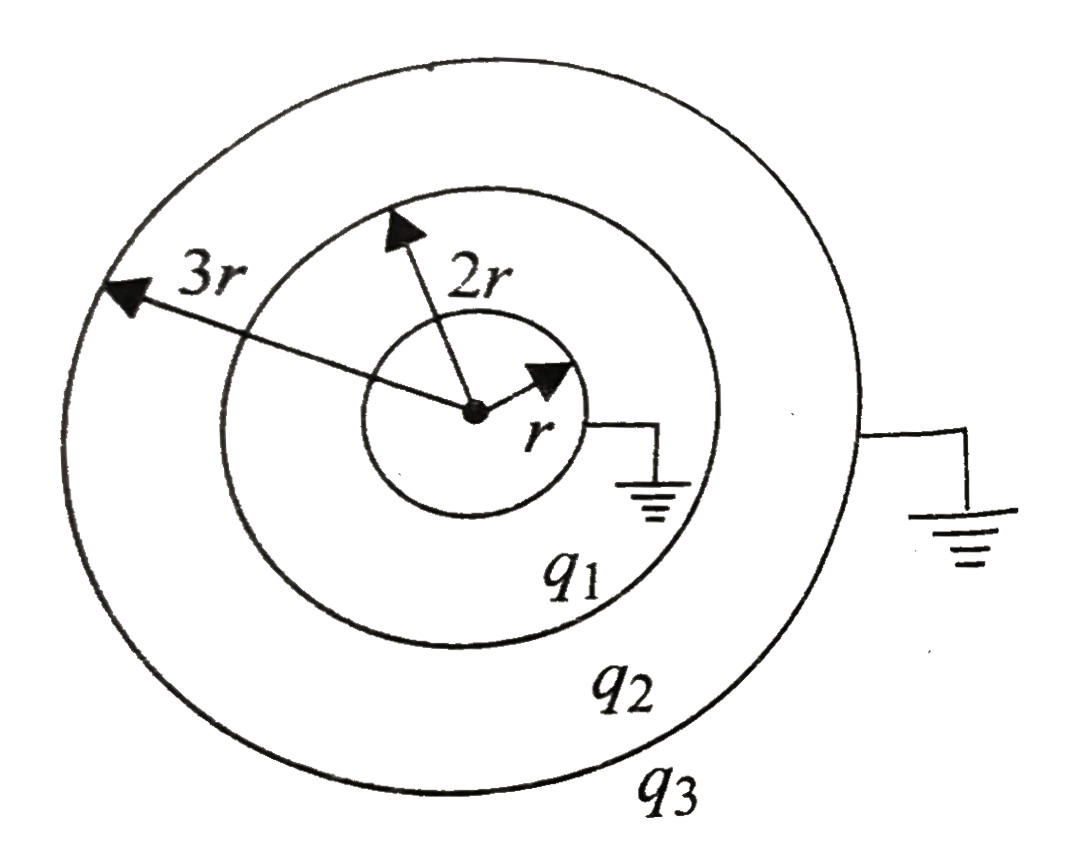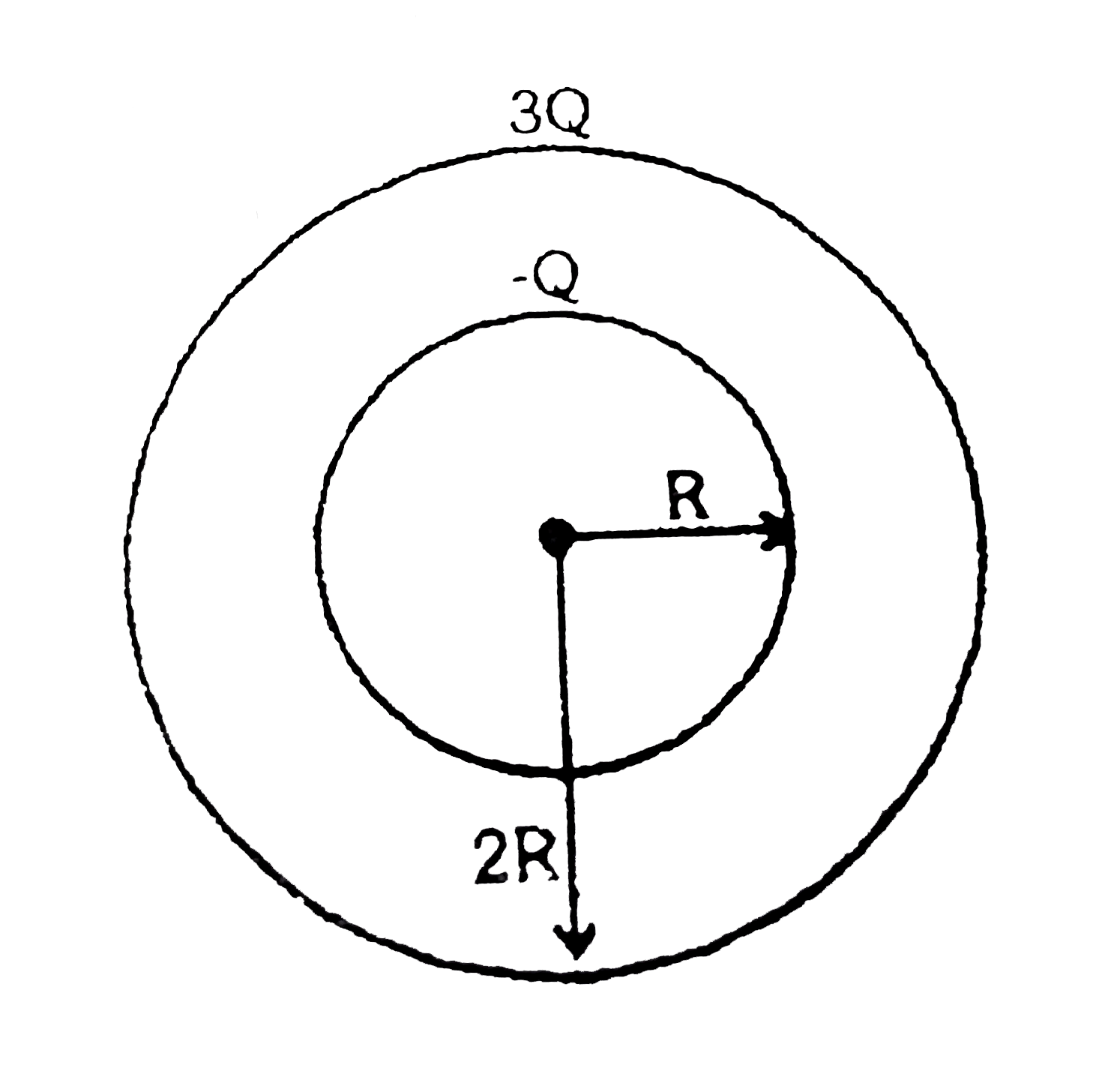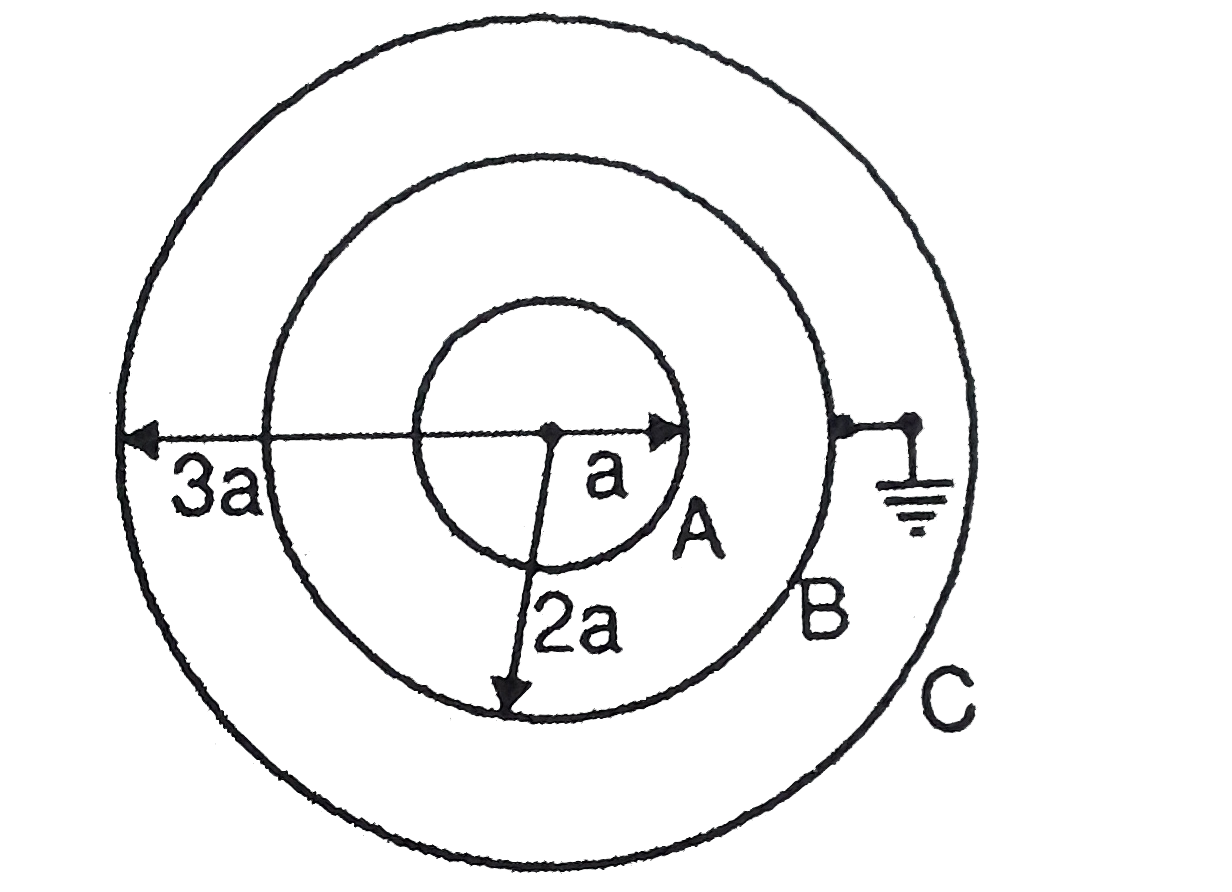Two concentric shells have radii R and 2R charges qA and qB and potentials 2V and (32)V respectively. Now, shell B is earthed and let charges on them become qA' and qB'. Then,

qA/qB=12
qA'/qB'=1
potential of AS after earhing becomes (32)V
potential difference between A and B after earting becomes V/2
The correct Answer is:A, D
a. VA=2V=kqAR+kqB2R
VB=32V=kqA2R+kqB2R
solving these two equations we get
qAqB=12
b. 
q′Aq′B=qA−qA=−1
c. & d. potential difference between A and B will remain unchanged as by earthing B, charge on will not changed.
∴V′A−V′B=VA−VB
=2V−32V=V2
∴V′A=V2
asV′B=0
Topper's Solved these Questions
- BOOK - DC PANDEYCHAPTER - ELECTROSTATICSEXERCISE - Exercise 24.14videos
ELECTROSTATICS
- BOOK - DC PANDEYCHAPTER - ELECTROSTATICSEXERCISE - Exercise 24.29videos
ELECTROSTATICS
- BOOK - DC PANDEYCHAPTER - ELECTROSTATICSEXERCISE - Example Type 83videos
ELECTROSTATICS
- BOOK - DC PANDEYCHAPTER - ELECTROSTATIC POTENTIAL AND CAPACITORSEXERCISE - (C) Chapter exercises50videos
ELECTROSTATIC POTENTIAL AND CAPACITORS
- BOOK - DC PANDEYCHAPTER - GRAVITATIONEXERCISE - All Questions120videos
GRAVITATION
Similar Questions
Two concentric conducting shells A and B are of radii R and 2R. A charge +q is placed at the centre of the shells. Shell B is earthed and a charge q is given to shell A. Find the charge on outer surface of A and B.
View SolutionFigure shows three concentric thin spherical shells A, B and C of radii a, b and c respectively. The shells A and C are given charges q and -q respectively and the shell B is earthed. Find the charges appearing on the surfaces of B and C.
 View Solution
View Solution
Knowledge Check
- Question 1 - Select One
Three concentric conducting spherical shells have radii r, 2r, and 3r and charges q1,q2andq3, respectively. Innermost and outermost shells are earthed as shown in figure. The charges shown are after earthing. Select the correct alternative.
 Aq1+q3=−q2Bq1=−q2Cq3q2=−13Dnone of these
Aq1+q3=−q2Bq1=−q2Cq3q2=−13Dnone of these - Question 2 - Select One
Two concentric spherical shells of radii R and 2R are given charges Q1andQ2 respectively.
The surfaces charge densities of the outer surfaces are equal. Determine the ratio Q1:Q2.A1:2B4:1C1:4D2:1 - Question 3 - Select One
There are four concentric shells A,B, C and D of radii a,2a,3a and 4a respectively. Shells B and D are given charges +q and −q respectively. Shell C is now earthed. The potential difference VA−VC is k=(14πε0)
AKq2aBkKq3aCKq4aDkq6a
Two conducting hollow spherical shells of radius R and 2R carry charges -Q and 3Q respectively. How much charge will flow into the earth if inner shell is grounded?
 View Solution
View SolutionTwo isolated concentric conducting spherical shells have radii R and 2R and uniform charges q and 2q respectively.If V1 and V2 are potentials at points located at distances 3R and R2 respectively from the centre of shells.Then the ratio of (V2V1) will be
View SolutionFigure shows a system of three concentric metal shells, A, B and C with radii a, 2a and 3a respectively. Shell B is earthed and shell C is given a charge Q. Now if shell C is connected to shell A, then find the final charge on the shell B
 View Solution
View SolutionTwo concentric spherical conducting shells of radii R and 2R carry charges Q and 2Qrespectively.Change in electric potential on the outer shell when both are connected by a conducting wire is (k=14πɛ0)
View SolutionThere are four concentric shells A,B, C and D of radii a,2a,3a and 4a respectively. Shells B and D are given charges +q and −q respectively. Shell C is now earthed. The potential difference VA−VC is k=(14πε0)
View Solution

